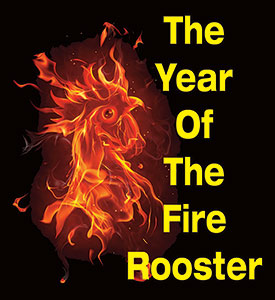By Donna Carey, LAc and Ellen F. Franklin, PhD
Oriental Medicine Journal, New Year 2017
When the rooster crows at the break of dawn,
look out your window and I’ll be gone…
– Bob Dylan, 1962, Don’t Think Twice Its Alright.
January 28, 2017, we enter into the year of the Fire Rooster, shifting our psyches away from the monkey business of 2016. Rooster’s arrival heralds a wake up call for the world. The Rooster, the tenth sign in the Chinese zodiac, demands that we address challenges head on. Roosters are outspoken, keen observers, and extremely frank; and they demand loyalty. They also have a tendency toward boastfulness and love the spotlight. Rooster teaches us to find our unique and individual voice, exuding confidence, enthusiasm, and candor. Roosters are not shy. They demand action. With each raucous crowing of cock-a-doodle-do, they push us to rise-up and shine our unique light in the world. No slackers allowed, we must greet the dawn with an awareness of how much there is to accomplish, and with the energy to move forward, regardless of the obstacles. Rooster is male and solar, and these qualities are amplified in a Fire Rooster year. Positive traits include hope, enhanced energy, bravery, and the confidence to reach our highest potential. In a Fire Rooster year we are surrounded by fire and solar energy, providing access to a strong generative and creative element that pushes industriousness and honesty. However, it is also a time that demands a high level of self-awareness so that we do not lose sight of the power of fire to bring great destruction and to ignite aggression, egotism, fanaticism, coarseness, and flamboyant disregard for truth.
Rooster Qualities
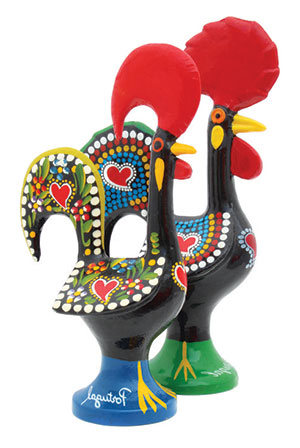 The Rooster's associated sun sign is Virgo. Virgos tend to be practical, and they enjoy order and tidiness. Interestingly, these personality traits are similar to the rooster, which is a naturally clean and tidy bird that likes to take frequent baths, keep a tidy roost, and stay very tuned in to its surroundings, to the point that some might say they have eyes in the backs of their heads. Roosters are also extremely smart and always on guard. Although they have a diminished sense of smell and taste, their sense of hearing is very strong. The rooster’s lifespan is approximately 5 to 8 years; butdepending on breed and living conditions, they may live 10 to 15 years. Their diet includes insects, worms, snakes, acorns, grains, nuts, and seeds. Roosters are always on the lookout for predators including coyotes, bobcats, possums, raccoons, owls, and skunks.
The Rooster's associated sun sign is Virgo. Virgos tend to be practical, and they enjoy order and tidiness. Interestingly, these personality traits are similar to the rooster, which is a naturally clean and tidy bird that likes to take frequent baths, keep a tidy roost, and stay very tuned in to its surroundings, to the point that some might say they have eyes in the backs of their heads. Roosters are also extremely smart and always on guard. Although they have a diminished sense of smell and taste, their sense of hearing is very strong. The rooster’s lifespan is approximately 5 to 8 years; butdepending on breed and living conditions, they may live 10 to 15 years. Their diet includes insects, worms, snakes, acorns, grains, nuts, and seeds. Roosters are always on the lookout for predators including coyotes, bobcats, possums, raccoons, owls, and skunks.
Roosters are also symbols of good fortune and prosperity. Rooster pottery and knickknacks are frequently found in the kitchen. In Cuban culture the rooster is an important symbol, as it represents strength and power. It is considered a great compliment to call a man a rooster.
Rooster Worship
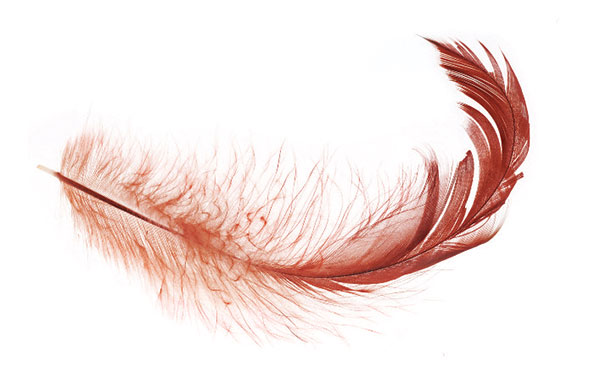 Evidence of the rooster as an object of worship dates back at least to ancient Mesopotamia, where the rooster is identified with Nusku, the god of light and fire. It is postulated that the rooster may have come to Mesopotamia from India by way of Iran. An early visual representation of the rooster was discovered in an excavation from an Assyrian tomb in Assar, and numerous seals have also been found that date to the first millennium. In a Babylonian scene a rooster is depicted on a pedestal as an object of worship. The rooster was also of great importance to the Greeks, who referred to it as the Persian bird. Mythological references to the rooster are discussed below. Links to the rooster in religion can be found in Zoroastrianism, in the rise of Christianity, and in Mithraic and mystery religions. Common themes include the animal of dawn announcing the end of darkness and the arrival of light, the fight against death and for the future of the soul, as well as the belief in the potential for resurrection.
Evidence of the rooster as an object of worship dates back at least to ancient Mesopotamia, where the rooster is identified with Nusku, the god of light and fire. It is postulated that the rooster may have come to Mesopotamia from India by way of Iran. An early visual representation of the rooster was discovered in an excavation from an Assyrian tomb in Assar, and numerous seals have also been found that date to the first millennium. In a Babylonian scene a rooster is depicted on a pedestal as an object of worship. The rooster was also of great importance to the Greeks, who referred to it as the Persian bird. Mythological references to the rooster are discussed below. Links to the rooster in religion can be found in Zoroastrianism, in the rise of Christianity, and in Mithraic and mystery religions. Common themes include the animal of dawn announcing the end of darkness and the arrival of light, the fight against death and for the future of the soul, as well as the belief in the potential for resurrection.
During the rise of Christianity the rooster was said to have crowed after Peter betrayed Christ, serving as a symbol of repentance and resurrection. In the New Testament, Jesus prophesied Peter’s betrayal, “I tell you, Peter, before the rooster crows today, you will deny three times that you know me.” In the 6th century Pope Gregory I declared the rooster an emblem of Christianity, and it was Pope Nicholas I in the 9th century who decreed by papal order that a figure of a rooster be placed on every church steeple. It is still a common practice to post weather vanes with roosters on tops of churches as a vigilant watcher against evil.
 In medieval times, astronomical clocks were designed to embody the microcosm and the macrocosm and were imbued with strong religious symbolism that incorporated the rooster. One example is a cathedral clock at Notre-Dame de Strasbourg that was built between 1352 and 1353. It depicts the macrocosm and microcosm and the idea of salvation; and it contains figures of the Virgin, baby Jesus, the three Magi, and the rooster. The rooster flaps its wings and crows on the hour. This clock still serves as a memorial to the sacrifice of Jesus and the need to be ready for his return, providing another example of the rooster in religious life.
In medieval times, astronomical clocks were designed to embody the microcosm and the macrocosm and were imbued with strong religious symbolism that incorporated the rooster. One example is a cathedral clock at Notre-Dame de Strasbourg that was built between 1352 and 1353. It depicts the macrocosm and microcosm and the idea of salvation; and it contains figures of the Virgin, baby Jesus, the three Magi, and the rooster. The rooster flaps its wings and crows on the hour. This clock still serves as a memorial to the sacrifice of Jesus and the need to be ready for his return, providing another example of the rooster in religious life.
In the Gnostic texts Abraxas is depicted as a being with the head of a rooster, the torso of a man, and serpent legs. Jung wrote about this supreme deity of the Gnostics in Seven Sermons to the Dead and in the Red Book, where Jung describes Abraxas as a time god, the beginning and the end, life and death, the Demiurgos, and the world creator, not unlike Shiva or Purusha. Amulets with the image of Abraxas have been discovered in archeological sites in Alexandria and Syria.
In Judaism the rooster is an emblem of honesty and gallantry, so revered that the title of Rooster was awarded to temple officials. There are also references in the Old Testament to temple officials having a cock girded about the loins, a religious instilling of being stately in stride. A traditional practice before Yom Kippur, the Day of Atonement, was to swing a kosher hen or rooster around the head and slaughter it in the ritual of kapparos. In this sacrifice the animal takes on the person’s sins and the meat is donated to the poor. In the Talmud there is a reference to courtesy toward one’s mate being learned from the rooster, who, when food is found, calls the hens to eat first. The Talmud also states that had the Torah not been given to us, we would have learned modesty from the cats, honest toil from ants, chastity from doves, and gallantry from cocks.
Rooster Mythology and Archetypes
The rooster’s loud crow at dawn is likely one of the reasons it is a solar symbol in cultures around the world. The ancient Greeks believed the rooster spirit saluted the sun, its screeching cry a symbolic victory over darkness. Other associations between the Sun god and the rooster include the story of Alectryon, a servant of Ares who was asked to serve as a sentry to protect the secret love affair between Aphrodite and Ares. Unfortunately, Alectryon fails to keep watch, falling asleep at his job. Helios, the sun god, discovers the lovers and quickly spreads the word about the illicit love affair. As punishment, Ares turned Alectryon into a rooster that must crow daily to herald the approach of dawn. The Cretan solar God Velchanus also had a cock for his emblem; his attributes were assimilated into Zeus. In addition, a rooster was present when Leto gave birth of Apollo and Artemis. Thus we see the rooster associated with both Solar and Moon myths. The cock is often depicted with a golden halo not unlike the rays of light emanating from the head of Apollo.
Greek solar gods include Helios and Apollo, the god of light, patron of medicine and prophecy, and father of Asclepius. A rooster was ritually sacrificed to Asclepius because it was believed the rooster heralded the soul of the dead that would be led to the otherworld. It was also Asclepius who brought the dead back to life. Another link between the rooster and resurrection is the myth of Attis, the youth loved by the goddess Cybele, who died from a self-inflicted wound; in her grief Cybele revives her dead lover, and they are worshiped together. The rooster is also linked to Hermes, the messenger of the gods, who can travel between the worlds. He was sent to Hades to negotiate the release of Persephone, but also travels freely between the heavens, Earth, and the underworld, as a guide of souls, earning him the name Psychopompos. Because of its valor, the cock is also found as an attribute of warriors such as Ares, Hercules, and Athena.
In Japanese mythology it is the brave rooster’s loud crowing that entices Amaterasu, the Goddess of the Sun, out of her cave to bring light back into the world. The white cockerel is an auspicious symbol to the Shinto shrine tradition, whose origins may have come from the Taoist traditions of the Tang Dynasty and Nara periods. In the Isonokami Shrine, sacred roosters roam freely and are seen as messengers of the gods. These cave and rooster mythologies of Japanese culture are perhaps closest to those of the Miao tribes of East and Southeast Asia, who share a common M7 mitochondrial DNA ancestry. Miao and Hmong/Miao as well as Japanese peoples are associated with cave culture; many of their festivals include dancing in the caves to draw out the sun. Rooster divination is quite popular in these cultures, as the rooster is seen as a medium and a messenger, connecting secular with supernatural worlds. Rooster delivers requests for blessings to ancestors and brings messages about the future, as well as guides souls to find their path of light to the realm of gods and ancestors. The cock is seen on many tomb mural paintings at the helm of a boat heading towards the sun. In the East rituals associated with Spring, Fire, and the Sun abound with cockfighting at the center.
 In Korea people believed that roosters were timekeepers and symbolized auspicious beginnings and beneficent influences. The rooster’s sound dispelled evil spirits, and its crest or comb spoke of its superior intelligence. Its sharing of food exhibited patience, and its ability to stay awake all night and cry at the same time to announce day imbues it with trustworthiness. The sharpness of its toenails represents the science and precision of war and, as roosters will fight until death, the ultimate show of bravery.
In Korea people believed that roosters were timekeepers and symbolized auspicious beginnings and beneficent influences. The rooster’s sound dispelled evil spirits, and its crest or comb spoke of its superior intelligence. Its sharing of food exhibited patience, and its ability to stay awake all night and cry at the same time to announce day imbues it with trustworthiness. The sharpness of its toenails represents the science and precision of war and, as roosters will fight until death, the ultimate show of bravery.
A Portuguese folktale reveals the rooster’s role in truth and equity in matters of the law. In one story, a man accused of theft when set before his accuser says that the cooked rooster on the banquet table would crow immediately when the noose was placed around the accused’s neck. The judge thought nothing of the warning and sentenced the man to be hung. Well, the rooster stood up and crowed and crowed, exposing the judge’s mistake. As luck would have it, a poorly tied knot kept the man from his death, and he was freed.
The Celts view the rooster as a messenger to the underworld; as he traveled his cawing would bring forth the souls of brave soldiers who died in battle. There are many depictions of the god Mercury with a sacred rooster as a travel companion. In many of these legends the rooster uses his power to send ghosts and disgruntled spirits away with his bold and fearless cawing.
In Norse mythology the rooster symbolizes soldierly vigilance. It would post itself on the upper branches of the Yggdrasil (the world tree that holds together Heaven, Earth, and the Underworld) to warn gods of the approach of lethal foes and prepare for attacks.
A popular myth transmitted from the Sichuan Province of China depicts a time when ten suns revolved in the Earth’s sky. It is the story of Yi, the archer, sometimes known as Houyi. At one time Yi and Houyi were two separate archers; but, as often happens with the transmission of stories, they merged into one character.
In the historical time of Houyi, as humans began to inhabit the Earth, there were ten suns in the sky. Sometimes they existed simultaneously, and sometimes they took turns offering illumination. Needless to say, there was no night, only perpetual day. The suns withered the Earth, causing widespread destruction, thirst, hunger, and pestilence. During this very difficult time Houyi, a phenomenal archer, decided to take the world’s fate into his own hands and shoot down the suns from the sky.
Houyi exuded strength and confidence. His bow was crafted of tiger bones, and his arrows of dragon’s sinews. In one fell swoop Houyi shot down nine suns. The last Sun, terrified, retreated, leaving the world in perpetual shadow and night. Humanity could no more live with this extreme than with the scorching heat of ten suns. The people begged Houyi to shoot the last sun. Even though Houyi promised not to harm the last Sun, it still refused to come out. People pleaded with it; they begged, shouted, and tried to coax it out, hoping to ease its fright. The people became desperate, and so they sent a magpie, then a crow, then an owl, and many species of birds of the day and night sky. Each creature extended an invitation to the sun, but Sun remained hidden and refused to rise.
Finally, the rooster, known for its sincerity of heart, cried out to Sun, “Oh brother, brother, (Gege, Gege in the Chinese language) please come out!” Sun was so deeply moved by the rooster’s impassioned crow that it finally responded and slowly rose. From that day on, it is the rooster’s daily ritual to shout to the sun, “Gege, Gege!” As soon as Sun hears rooster’s voice, it rises up to bring light and warmth to the world.
 From this myth and so many others, we are provided with keys to the character of the masculine rooster, a solar symbol, who comes to represent ritual, observance, honesty, bravery, alertness, and resurrection.
From this myth and so many others, we are provided with keys to the character of the masculine rooster, a solar symbol, who comes to represent ritual, observance, honesty, bravery, alertness, and resurrection.
Another Chinese legend that relates to the rooster and his comb may be a variation of the Houyi myth. In this story a hunter who hunted by day and tended his beautiful gardens in the evenings, noticed his prized mulberry bush wilted and shriveling. Despite his efforts to bring the mulberry bush back to life, it died. The hunter vowed revenge, shouting out to the Sun, blaming it for the destruction of his prized bush. He aimed his bow and arrow and fired at the Sun, hitting a direct bullseye. The Sun cried out in pain and hid itself behind the clouds to heal its wound. As the Sun remained hidden the land grew cold and dark, and deaths began to occur. The animals, realizing they would soon perish without the Sun, called together a great council. The council determined that they must do everything in their power to entice Sun to come out from hiding in the clouds.
Ox was the first volunteer to call to Sun but his voice was so deep and low Sun failed to hear it. Tiger was next, roaring out a message; but Sun became frightened at the ferociousness and unwelcoming quality of Tiger’s voice and retreated further into the clouds. Rooster, not happy with this situation, strutted into council and confidently said, “Let me try!” In a loud, clear voice Rooster called out to Sun. The Sun heard the rich, welcoming voice of Rooster and peeked slowly out from behind the clouds. Rooster called again, and Sun responded to his golden timbre, fully emerging from the clouds. Sun was so pleased with Rooster that it wanted to bestow a very special gift, a comb, so that Rooster could comb his beautiful feathers before calling out each morning.
Sun threw the comb down to Rooster. Rooster was so very excited and exuberant that he mistimed the catch, and the comb landed upside down on his head, where it remains today as a hallmark of the rooster.
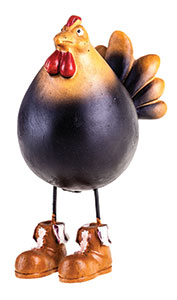 Rooster Keywords
Rooster Keywords
Optimism
Vigilance
Self-confidence
Individuality, being heard or making oneself known
Linked to the past, and moving toward the future
Death and resurrection
A wake-up-call on all levels
Enthusiasm
Solar Energy
New Beginnings
Resurrection
Ego
Arrogance
Excessive flamboyance
Sexuality
Protection
Trustworthiness
Rooster Iconography in the Home
Rooster images are often found in cookware, plates, cups, platters, clocks, and table dressings; they make excellent New Year’s gifts, as they are believed to bring luck and protection to the home. Remember, it takes just one rooster to fertilize an entire barnyard of hens, so incorporating the rooster into your cooking fosters creativity and problem solving. This small creature believes he is entitled to touch the stars, so harness that energy to create culinary dishes that are out of this world. Arch your neck and let loose your sacred culinary cock song.
Sriracha Sauce brings heat to the Fire Rooster Year:
Our pick for a 2017 culinary must is Sriracha. There is a great history to the obsession with this great rooster sauce. Suffice it to say that the rooster crowed for huy Fong Foods in the early 1980’s, and today the popularity of Sriracha continues to grow. The company sells more than 25 million bottles a year. it never goes bad and has mass appeal for professional chefs, restaurants, and home cooks. One example of the growing popularity of this brand is the 2016 partnership between Lexus and huy Fong Foods. Lexus built a promotional Sriracha is sport sedan, with a sauce look-alike liquid in the steering wheel and a warning for “hot handling.” Temperature controls go from Eco to Sriracha hot. The huy Fong rooster logo is incorporated into the steering wheel, and the trunk contains 43 bottles of Sriracha. The key fob includes an emergency button that dispenses, yes, you guessed it, sauce from the nozzle on the fob. And of course the color of the exterior is Sriracha red.
A new Year taste treat to celebrate the Fire Rooster is black-eyed peas (for rooster’s watchfulness, and eyes in the backs of their heads) served with lightly sautéed kale and garlic, seasoned with smoked salt and Sriracha on the side. Pair this with veggie tacos drizzled with Sriracha lime mayo.
 Vegetarian Black-Eyed Peas with Sautéed Kale
Vegetarian Black-Eyed Peas with Sautéed Kale
16 ounces dried black-eyed peas
4-6 cups of vegetable stock or water
1 bottle of iPA beer
1 TBS. oil
2 cups onions, diced
3 carrots, diced
2 medium zucchini
1 cup of chopped spinach
6-8 garlic cloves
2 TBS. dried red pepper flakes
½ tsp. fresh ground black pepper
Fresh thyme to taste, or 1 TBS. dried
Fresh oregano to taste or 1 tsp. dried
Salt & Pepper to taste
A dash of smoked salt to taste
Photo by Ellen F. Franklin
Rinse the black-eyed peas carefully and remove stones or any discolored peas, put in a medium sized saucepan, cover with water or stock, and bring to a boil. Once it boils, reduce the heat and simmer for 5 minutes.
Meanwhile in a large pan heat oil and add the onions, garlic, and carrots and cook until tender; then add zucchini and chopped spinach, and season with pepper flakes, black pepper, thyme, oregano, salt, and pepper. Add water or vegetable stock to cover and a bottle of IPA beer, bring to a slow boil, reduce heat, and simmer covered for about one hour. uncover and cook for about 30 additional minutes or until the peas are tender. Add more stock as needed. Serve with Sriracha Sauce on the side and kale sautéed with elephant garlic and seasoned with smoked salt.
Sauteed Kale
2 cloves of Elephant Garlic
1 TBS Olive Oil
Two bunches of kale or other greens
Juice of 1 Meyer lemon
Season with pepper and smoked salt
Thinly slice the elephant garlic and sauté in olive oil. Gradually add the kale, and salt and pepper, and lemon juice to taste.
Question:
Who gets to crow? Make noise at dawn? Wake everyone up
and harness the role of the living alarm cluck
Answer:
It’s all about cock-a-doodle dominance
Facts:
When chickens live together in groups (coops), the top rooster crows first, followed by his social underlings. It is an interesting phenomenon for the subordinates to follow the pecking order despite their own circadian rhythms and strong internal clocks, which are also prompting them to make noise, and lots of it. Yet, they politely yield to the social order or accept the punishment of pecking by the top-ranking rooster for their indiscretions.
All About Roosters
Adult male chickens over one year old are known as cocks in the UK and Ireland. In the US, Canada, and Australia they are roosters. Cockerels are males, less than a year old, and capons are castrated roosters. Female chickens over a year old are hens and under a year of age they are pullets. In the egg laying industry pullets transition to hens when they begin laying eggs, which can be as early as 16 to 20 weeks old. The young are called chicks, and chicken is the meat and really refers to young domestic fowl of both sexes.
The chicken (Gallus gallus domesticus), a domesticated fowl, is a subspecies of the red jungle fowl, whose population is over 21 billion. They are largely a food source, kept and consumed for meat and eggs. The chicken genome has changed very little from the feathered ancestors of the Cretaceous-Paleogene extinction event, i.e., those of the avian dinosaur gene pool. Genetic research points to multiple mitochondrial origins in Southeast, East, and South Asia, but common ancestors are found in the Americas, Europe, the Middle East, and Africa, originating from the Indian subcontinent and the Indus valley.
Roosters are differentiated from hens by their impressive plumage, long flowing tails and shiny pointed feathers on their necks and backs. Their colors are brighter and more striking than females of the same breed. Adult males and females both have combs (fleshy skin on top of the head) and wattles (flaps of skin under the beak), but they are much more prominent in roosters. Generally, domestic chickens do not fly unless fleeing danger, though they can fly short distances.
Chickens are omnivores and while roaming in the wild scratch the soil to expose seeds, insects, lizards, small mice, and snakes.
So You Think You Can Dance?
As part of the courtship ritual roosters will often do a circle dance around or near the hen. They will lower a wing near the hen as part of the mating call. The hen responds and then the rooster takes action, and so the mating proceeds.
And Then?
Chickens lay eggs of many colors—blue, green, brown, white, and even purple. Hens will try to lay eggs in nests that already contain eggs and will even move eggs from neighboring nests into their own. Some hens like to lay eggs in the same location all the time; and sometimes it is the location that matters, so that many hens have individual nests in close proximity. Farmers are known to use golf balls to encourage hens to lay in a particular location.
Social Behavior
Chickens are social birds. They are gregarious and communally incubate their eggs and raise their young. Although communal, the domineering ones establish a pecking order that allows them privilege for access to food and to prime nesting locations. The addition of hens or roosters to the flock, or their removal, will often lead to disruption in the social order and a battle for dominance that establishes a new pecking order.
When a rooster finds good food, he yells at a high-pitched cluck and lets the other chickens eat first. Shrill crowing signals territorial dominance to other roosters. Crowing is also a response to disturbances or potential threats in their surroundings.
Famous Roosters
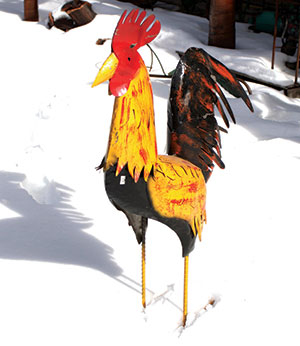 Looney Tunes Foghorn Leghorn
Looney Tunes Foghorn Leghorn
Walt Disney’s Cocky Locky
Chicken Little
Rowdy Roosters
Picasso’s Rooster
Rooster Cogburn from the western adventure film True Grit,
an aging united States Marshall who is portrayed by John Wayne.
People born in the Year of the Rooster include:
Britney Spears, Justin Timberlake, Roger Federer, Beyoncé Knowles, Paris Hilton, Sam Smith, Jennifer Lopez, Caroline Kennedy, Carmen Miranda, Caruso, Daniel Day-Lewis, Eleanor Roosevelt, Eric Clapton, Alicia Keys, Goldie Hawn, Natalie Portman, Groucho Marx, Jennifer Aniston, Luis Guzmán, Serena Williams, Melanie Griffith, Mia Farrow, Michael Caine, Michelle Pfeiffer, Renee Zellweger, Rod Stewart, Steve Martin, and Yoko Ono.
Treatment Tips for the Year of the Rooster:
For this Fire Rooster year of 2017 sound a “wake up call” to yourself and clients using the
Extraordinary Vessels:
Yin Qiao Mai and Yang Qiao Mai Vessels, known as the Motility Vessels, rise up, activate motion, and give strength and composure, drawing in Earth energy through the heel and sole. They meet in the eyes, the “gates of destiny,” which gather the essences of both, allowing us to wake up from our individual and collective malaise and our spiritual amnesia and help us truly see and reflect messages from the heart.
Both the Yin and Yang Qiao Vessels have a relationship to the brain, eyes, and top of the head (the comb). They can promote balanced movement and clear intention that helps us overcome fear and inertia and sound our heart’s true song.
The extraordinary vessels can be treated with acupressure, acupuncture, Acutonics tuning forks, or a combination of these. However, we recommend that you begin and end an Acutonics treatment by grounding. Apply the Ohm Unison or Ohm Octave tuning forks to KID 1 (Yong quan), Gushing Spring. This is an invitation to the body to settle down to connect to Earth with a calm, solid foundation.
Yin Qiao Mai: Opening Point KID 6 (Zhao hai), Shining Sea, Balance Point LU 7 (Lie que), Broken Sequence. Apply the Solar 7th interval, placing the Sun Fork on KID 6 and the Low Ohm on LU 7. Follow with Mars/Venus 5th; place Mars on KID 6 and Venus on LU 7.
Yang Qiao Mai: Opening Point UB 62 (Shen mai), Extending Vessel, Balance Point SI 3 (Hou xi), Back Ravine. Apply the Full Moon 6th interval, placing the Full Moon Fork on UB 62 and the Ohm fork on SI 3. Follow with Mars/Venus 5th, placing Venus on UB 62 and Mars on SI 3.
Support the treatment by using the Mars/Venus 5th on the Three Treasures: Ren 4 (Guan yuan), Origins Pass; Ren 17 (Shan zhong), Heart Center; and Du 20 (Bai hui), 100 Connections.
References:
- Birrell, A. (1993). Chinese Mythology: An Introduction. Baltimore, MD: John Hopkins University Press.
- Carey, D., Franklin, E. F., Ponton, P., Ponton, J., & MichelAngelo. (2010). Acutonics from Galaxies to Cells, Planetary Science, Harmony and Medicine. Vadito, New Mexico: Devachan.
- Carrillo de Albornoz, M. A., & M. A. Fernández. (2014). The symbolism of the rooster, http://library.acropolis.org/the-symbolism-of-the-rooster/
- Ehrenberg, E. (Ed.) (2002). Leaving no stones unturned: Essays on the ancient Near East and Egypt in honor of Donald P. Hanson. Winona Lake, Indiana: Eisenbrauns.
- Graves, R. (1996). The Greek Myths. Volumes I and II, Fifth edition. London: The Folio Society.
- Hard, R. (2004) The Routledge Handbook of Greek Mythology: Based on H. J. Rose's Handbook of Greek Mythology. London and New York: Routledge.
- Jung, C. G. (2009). The Red Book, Sonu Shamdasani, Ed. New York, NY: W.W. Norton & Company.
- Jung, C. G. (1916) The Seven Sermons to the Dead, http://gnosis.org/library/7Sermons.htm
- Kawagoe, A. (2012) Heritage of Japan https://heritageojapan.wordpress.com/2012/10/28/an-examination-of-japanese-rooster-symbolism-mythologyand-the-funerary-and-folkloric-connections-with-rooster-symbolism-around-the-world/ downloaded January 5, 2016.
- Turner, P., & C. R. Coulter (2001). Dictionary of Ancient Deities. New York, New York: Oxford University Press.
- Nudd, T. (2016) Lexus just made a Sriracha car, and no this isn't an April Fools' joke. Auto brand just got spicier. Ad Week, http://www.adweek.com/adfreak/lexus-just-made-sriracha-car-and-no-isnt-april-fools-joke-174689
- Truitt, E. R. (2015). Medieval Robots: Mechanism, Magic, Nature and Art. Philadelphia, PA: University of Pennsylvania Press.
- Werner, E. T. C. (1994). Myths and Legends of China. New York, NY: Dover.
- Yang, L, Deming, A., & J. A. Turner. (2005). Handbook of Chinese Mythology. New York: NY: Oxford University Press.

